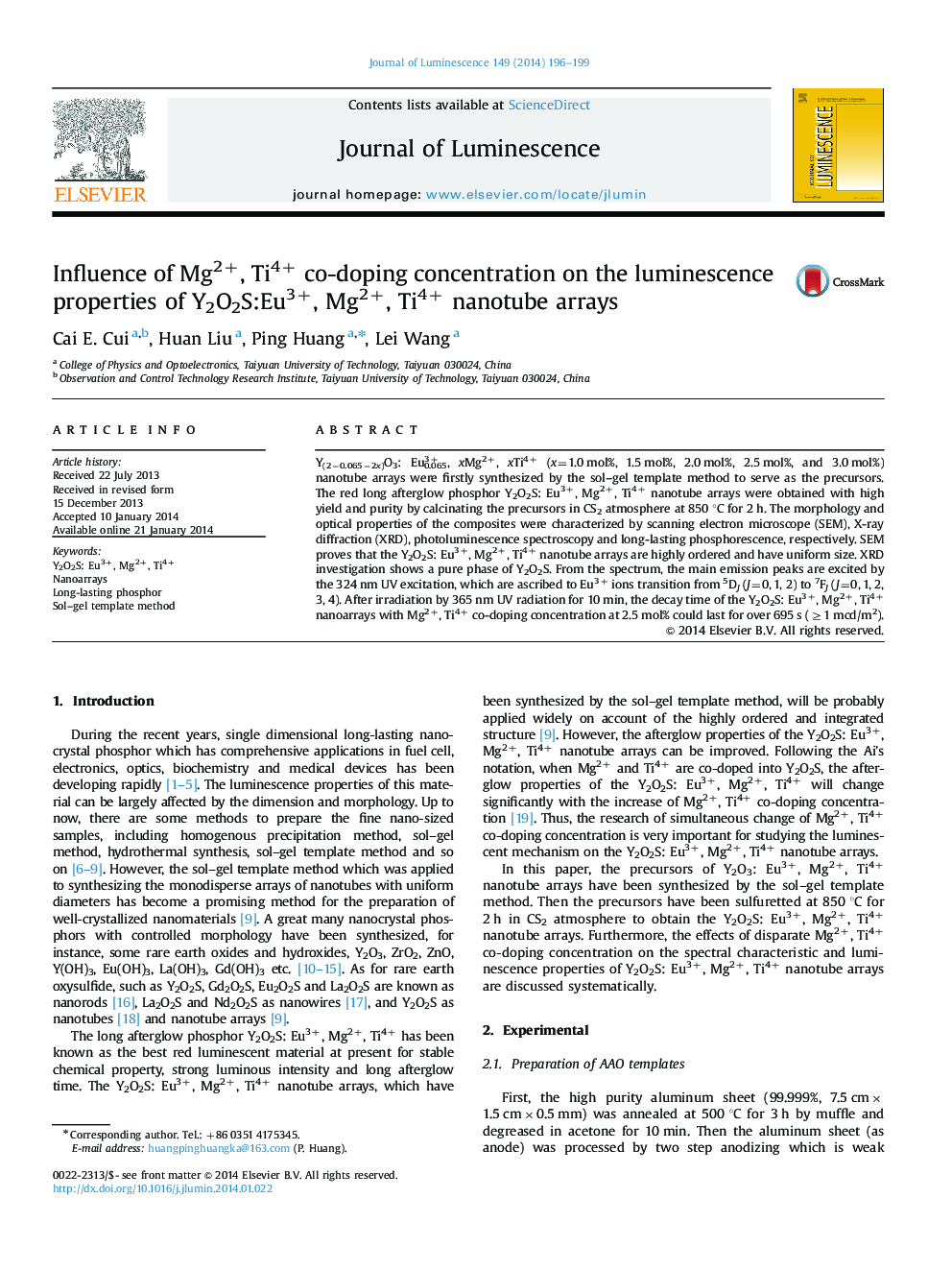| Article ID | Journal | Published Year | Pages | File Type |
|---|---|---|---|---|
| 5400260 | Journal of Luminescence | 2014 | 4 Pages |
Abstract
Y(2â0.065â2x)O3: Eu3+0.065, xMg2+, xTi4+ (x=1.0 mol%, 1.5 mol%, 2.0 mol%, 2.5 mol%, and 3.0 mol%) nanotube arrays were firstly synthesized by the sol-gel template method to serve as the precursors. The red long afterglow phosphor Y2O2S: Eu3+, Mg2+, Ti4+ nanotube arrays were obtained with high yield and purity by calcinating the precursors in CS2 atmosphere at 850 °C for 2 h. The morphology and optical properties of the composites were characterized by scanning electron microscope (SEM), X-ray diffraction (XRD), photoluminescence spectroscopy and long-lasting phosphorescence, respectively. SEM proves that the Y2O2S: Eu3+, Mg2+, Ti4+ nanotube arrays are highly ordered and have uniform size. XRD investigation shows a pure phase of Y2O2S. From the spectrum, the main emission peaks are excited by the 324 nm UV excitation, which are ascribed to Eu3+ ions transition from 5DJ (J=0, 1, 2) to 7FJ (J=0, 1, 2, 3, 4). After irradiation by 365 nm UV radiation for 10 min, the decay time of the Y2O2S: Eu3+, Mg2+, Ti4+ nanoarrays with Mg2+, Ti4+ co-doping concentration at 2.5 mol% could last for over 695 s (â¥1 mcd/m2).
Keywords
Related Topics
Physical Sciences and Engineering
Chemistry
Physical and Theoretical Chemistry
Authors
Cai E. Cui, Huan Liu, Ping Huang, Lei Wang,
